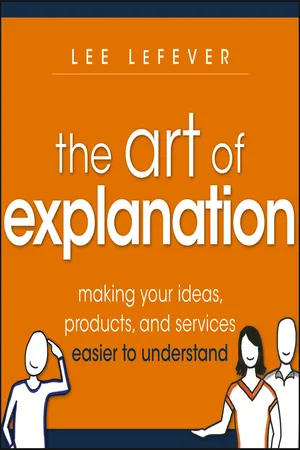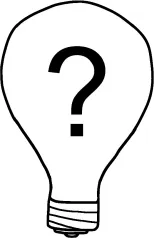![]()
Part 1
Plan
![]()
Chapter 1
Learning to Run
Trevor limped through the front door, sore again. These past few months had been tough on his joints. Six months ago he picked up running again after his doctor said he needed to get more exercise. To help keep himself motivated, he set a goal of completing a half-marathon within a year. But it didn't seem like this was going to happen—not the way things were looking now. Trevor was beginning to realize that his body just couldn't take a beating these days, and he joked with friends that he felt like an old man at 45.
It wasn't always this way. Trevor had always been a runner in one way or another. He played soccer in high school, and started to run as a way to stay in shape in college. He took to it naturally. But as he moved onto a career, his time became limited and he ran less and less frequently.
Trevor knew that something needed to change if he was going to complete the half-marathon. He tried a variety of tactics—buying new running shoes, wearing knee braces, and concentrating on stretching. However, nothing seemed to work, and the date for the half-marathon was drawing closer.
Trevor had recently been enjoying a drink with a friend and mentioned that he was having a difficult time preparing for the race. After some probing, his friend asked a simple question that he wasn't sure how to answer: “Have you tried changing how you run?” Perplexed, Trevor replied, “I'm not sure what you mean… I run how I run. It's always been the same—one foot in front of the other!” After a chuckle, his friend asked again “Seriously, have you ever thought about how you run—and what you could do to run better?”
The thought had never occurred to Trevor. He had always taken his running style for granted. After all, it had usually come easily to him, and he achieved the results he wanted. He assumed that his running style was as good as it ever could be, so he responded “Nah, the way I run is fine. And anyway, aren't we born with the ability to run?”
His friend replied, “Of course we can all run. But like anything, there is an art and skill to running, and part of getting what you want out of it is knowing how to run correctly.”
Trevor had never considered that there might be a right or wrong way to run, and questioned incredulously, “What could possibly make my running better?”
His friend smiled and answered, “Look it up.” And that is just what he did.
Trevor's perspective started to change within a few days. The more he researched, the more he saw running as a skill that he could improve. He learned about proper posture, stride, and how a foot strikes the surface, and discovered tactics that professional runners use to stay healthy. For the first time, he could see that his joint problems were likely due to how he was running. A feeling of relief came over him. Unlike his age, this was something he could change!
As he trained for the race, he began paying attention to his form and movements. Within a few weeks, his knee and back pain began to fade, and his endurance seemed to jump, which gave him the energy to run longer than ever. The half-marathon now seemed like a reality and it felt good.
If you ask Trevor about running today, he will tell you that his only regret is not discovering how he could improve his running earlier. But now that he has this new perspective, a full marathon doesn't seem too far away.
Like Trevor and his running, we all take explanation for granted. Because it is a natural part of how we communicate, the thought may never occur to us that explanation is a skill we can improve and put to work in achieving our goals. In this way, running and explanation have much in common:
- We have the ability to do it
- We may do it so frequently that we never think about it
- We think the way in which we do it is normal
- We never consider that we could improve the way we do it, but,
- Improvement is possible, and creates positive results
Because explanation is a skill that we can improve and apply to nearly every part of our lives, let's get started in doing so. In Chapter 2 we'll define explanation and consider the characteristics that make it useful and powerful.
![]()
Chapter 2
What Is an Explanation?
For most of my life, I never considered the definition of the word “explanation”—and I doubt I am alone in this. We all explain things so often, why would we need to define something we do every day?
The fact is, however, that most of us take explanation for granted. For many people, it's just something that happens. Someone asks a question, we answer it in the form of an explanation. We do not often step back and think about what makes an explanation an explanation or how we could approach it differently. Our explanations happen without much planning or editing.
It's a little like dancing. Your grace on the dance floor may mean that you take dancing for granted: it just happens when there is a rhythm. But even the best dancer can only get so far without defining specific dances, such as what makes the samba the samba and the waltz the waltz. These definitions create a standard form and shape that can be honed and refined. Only by defining the standards of the dance can we hope to improve it.
We'll begin to define explanation below by first looking at what is NOT an explanation. This will allow us to see it not as a simple shake of the hips, but as a dance that has a deliberate form, intent, and emotion.
What Is Not An Explanation
The following is a list of the various ways we can relate ideas and information. Although we will define explanation a bit later, it is useful to think about what is not an explanation. For instance, if explanation is the samba, these are some other dances:
Description—A description is a direct account of an action, person, event, and so on in which the intent is to help someone imagine something through words. For example, if I describe my coffee mug, my intent is to provide details that help you picture it. A description may relate that a mug is white, four inches tall, has a single curved handle, and is made of ceramic.
Definition—A definition is a description of the precise and literal meaning of something. A definition is meant to make clear exactly what something means. If I define a word, I am providing statements that help you see the exact meaning of the word. I might define coffee as a beverage that is made from roasted and ground seeds of the coffee plant.
Instruction—An instruction is a direction or order to do something. The intent of instruction is to make clear what is expected and how to proceed. If I give you instructions on how to make coffee, I am laying out the exact process or sequence of events that are required to achieve the desired outcome. Instructions may be related in short sentences such as: Insert filter into coffee maker. Pour ground coffee into filter. Pour water into coffee maker reservoir. Press start.
Elaboration—An elaboration is a presentation of information with detail, with the intent to provide a comprehensive and rigorous look at a concept, idea, theory, and so on. If I elaborate on the core concepts of coffee production, I will try to cover every detail. If I elaborate on the farming of coffee, I may describe the specific content of the soil in which it is grown, how to test the soil, and what levels of nitrogen will produce the best product for a specific geographic region.
Report—A report is a spoken or written account of an event and is intended to relay facts and details to others. If I visit coffee plantations in Colombia, I will report my experiences upon my return. This may appear in the form of a news story or magazine article and relate an account such as: “The moment I arrived at the plantation, I was offered a sample of their finest product, which I drank with joy. The company roasted the beans just a mile away, and you could smell the roasting beans in the air.”
Illustration—An illustration is an example that serves to clarify an idea. The intent of an illustration is to help make an idea more real by providing an example. I might say that the size of the plantation is an illustration of the coffee company's power in the region.
Of course, this doesn't mean that these communication forms have no role in explanation. Quite the opposite, in fact; they could all contribute to improved explanations. I list them simply to show that explanation is one of many communication forms, each with its own definition. Now we can look specifically at the definition of explanation.
Defining Explanation
Let us start with a formal definition. Explanation, according to Merriam-Webster, is “the act or process of explaining.”
OK, so maybe that's not very helpful. We obviously need to use a slightly different word. Here is the Merriam-Webster definition of explain as a verb: “To make known; to make plain or understandable.”
We can deduce from this that an explanation is an act or process that makes something known, plain, or understandable. That is pretty simple and straightforward. Personally, I am fond of the current Wikipedia version (Wikipedia, 2012):
To put it into the form we used above:
Explanation—An explanation describes facts in a way that makes them understandable. The intent of an explanation is to increase understanding. If I explain coffee roasting, I am clarifying the facts and making the ideas more understandable. For example, an explanation may highlight the role of heat in giving coffee a distinctive color and flavor when roasted.
As you can see, explanation is different from the other examples above, especially in intent. Explanations make facts more understandable. It seems to be that simple, but is it? As we'll see below, there are a number of nuances and ideas that make explanations a particularly potent form of communication.
Explanations Require Empathy
Every once in a while, I encounter someone who is a natural explainer, whose approach to communication naturally jibes with many of the points illustrated here. These people seek out unique and helpful ways to explain ideas to others. Sometimes, the best are teachers and journalists who combine their natural communication style with a focus on the professional standards of their profession. When I meet one of these people, I look for common traits and ask: what do great explainers have in common?
In a word, it is empathy. Great explainers have the ability to picture themselves in another person's shoes and communicate from that perspective. A great example of this is offering driving directions. From my unscientific research, natural explainers are better than average at giving directions. Why? My guess is that they can account for the experience of approaching a location for the first time. They are able to block out what is already familiar to them and instead focus on what the driver is likely to see at each turn.
And so it is with explanation. Creating a great explanation involves stepping out of your own shoes and into the audience's. It is a process built on empathy, on being able to understand and share the feelings of another. Only by seeing the world through the windshield of a driver in a foreign land can we ever hope to help them feel at home.
Act and Art
We live in a world of facts and fact-makers. Scientists, for example, have very rigorous standards used when claiming a statement is a fact. As such, the scientific method is a standard process that can lead to the discovery of facts. In this way, fact-making is a science, and we are all better off for it.
But facts are not perfect. Although they may be proven many times over, they are often difficult to understand and apply. And when people provide them without much context and with a high degree of specificity, their value becomes limited. It is more difficult to make sense of facts alone, which is why we need explanations. Explanations make facts more understandable, and the need for explanations becomes clear once you think about how many important facts are out there. Imagine...



